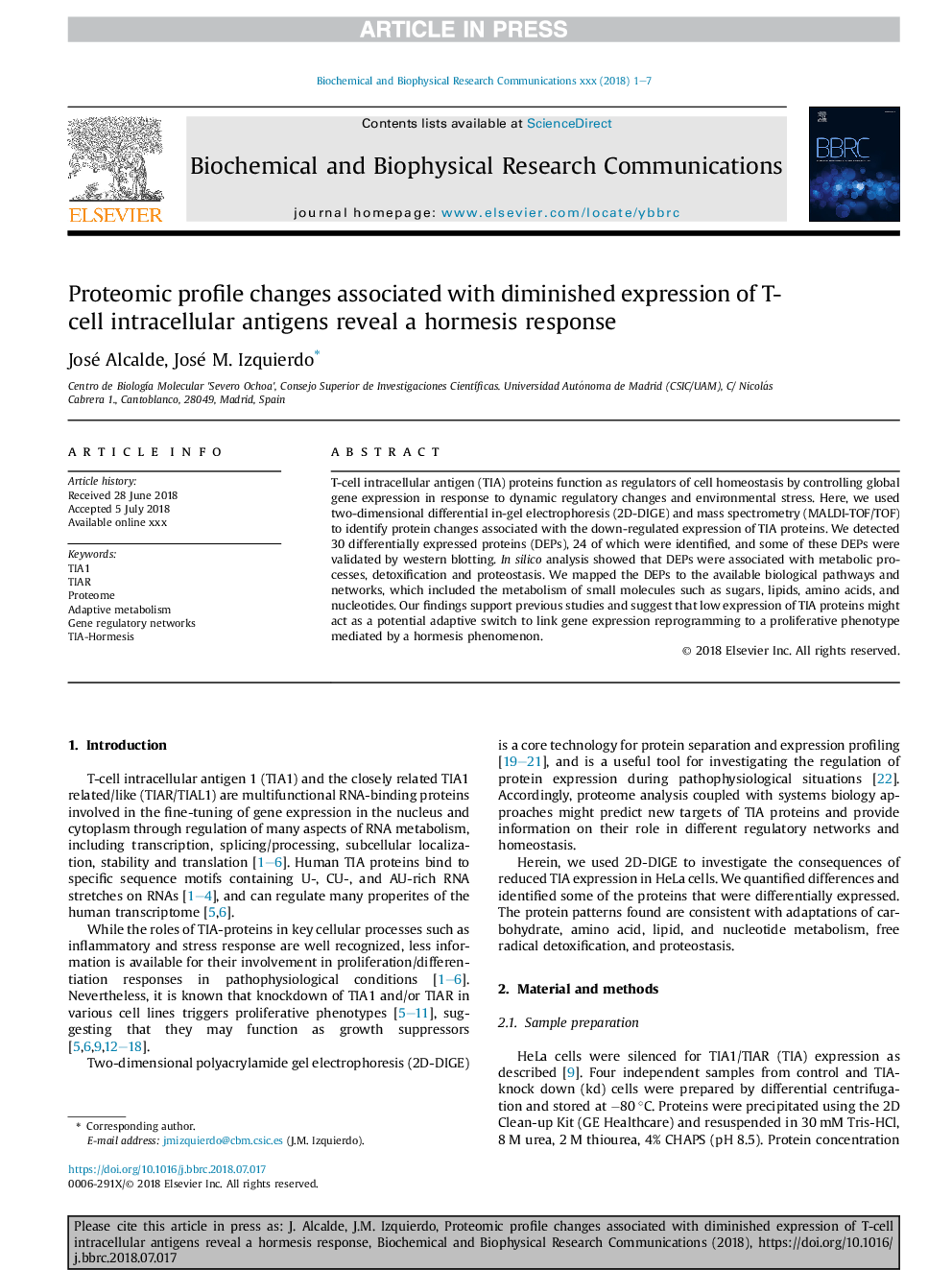| Article ID | Journal | Published Year | Pages | File Type |
|---|---|---|---|---|
| 8961828 | Biochemical and Biophysical Research Communications | 2018 | 7 Pages |
Abstract
T-cell intracellular antigen (TIA) proteins function as regulators of cell homeostasis by controlling global gene expression in response to dynamic regulatory changes and environmental stress. Here, we used two-dimensional differential in-gel electrophoresis (2D-DIGE) and mass spectrometry (MALDI-TOF/TOF) to identify protein changes associated with the down-regulated expression of TIA proteins. We detected 30 differentially expressed proteins (DEPs), 24 of which were identified, and some of these DEPs were validated by western blotting. In silico analysis showed that DEPs were associated with metabolic processes, detoxification and proteostasis. We mapped the DEPs to the available biological pathways and networks, which included the metabolism of small molecules such as sugars, lipids, amino acids, and nucleotides. Our findings support previous studies and suggest that low expression of TIA proteins might act as a potential adaptive switch to link gene expression reprogramming to a proliferative phenotype mediated by a hormesis phenomenon.
Related Topics
Life Sciences
Biochemistry, Genetics and Molecular Biology
Biochemistry
Authors
José Alcalde, José M. Izquierdo,
